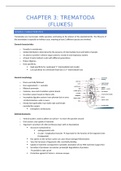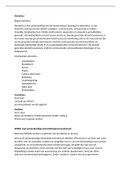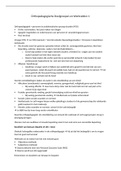Resumen
Summary CHAPTER 3 - trematoda
- Grado
- Institución
The document consists of chapter 3: trematoda of the course Human parasites, micro-organisms and zoonoses of the master in biomedical sciences: tropical and infectious diseases given by prof. Guy Caljon. All information and important notes that were given during the classes were noted.
[Mostrar más]






